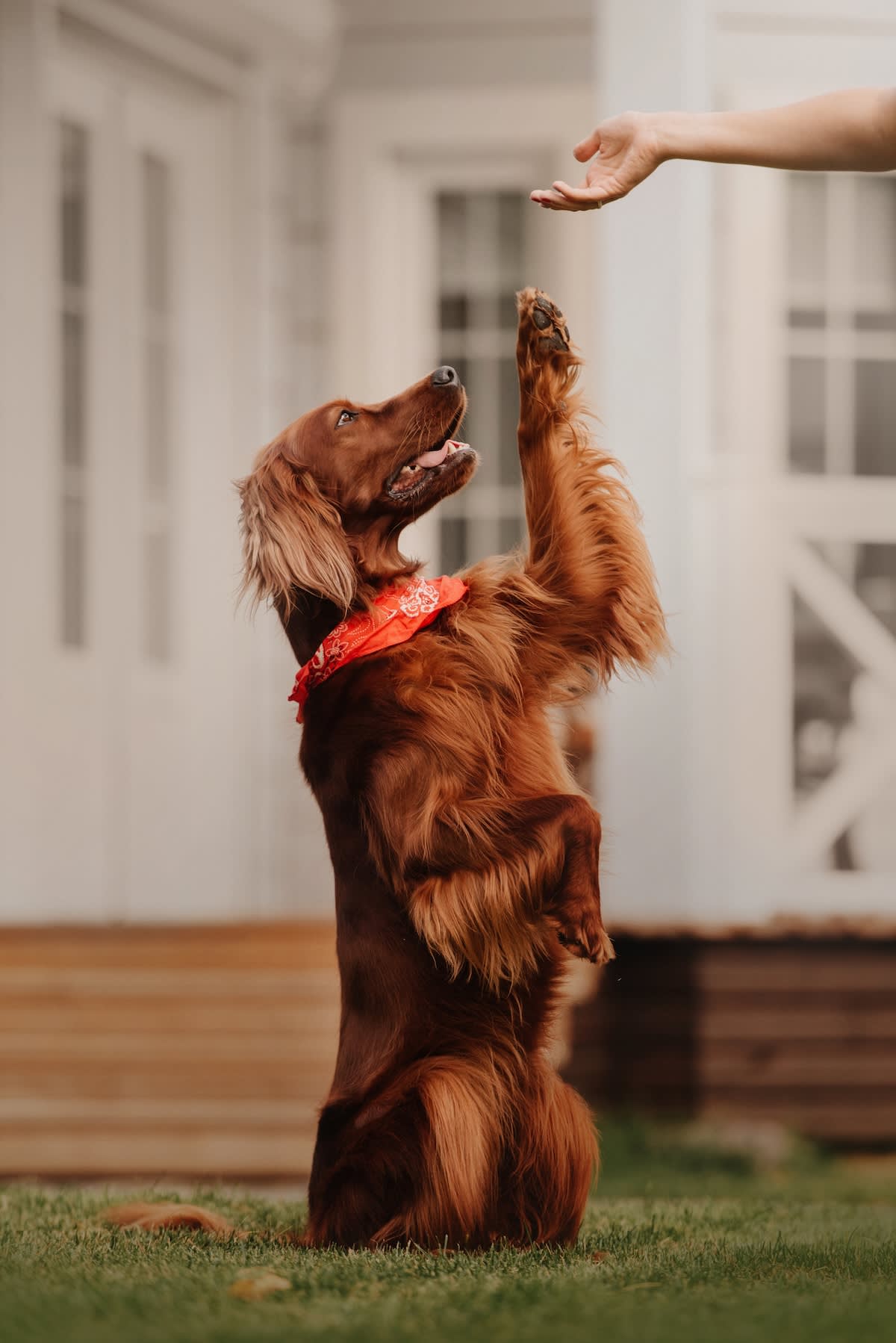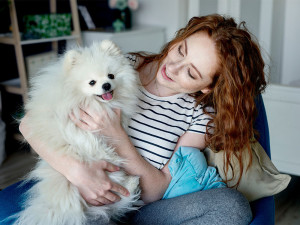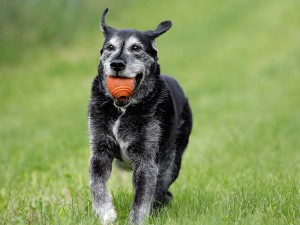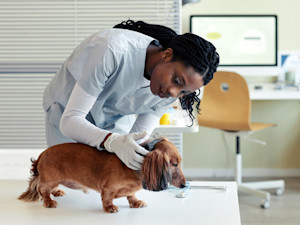I’m a Vet and I Would Never Teach My Dachshund This Common Trick
It could cause serious health problems
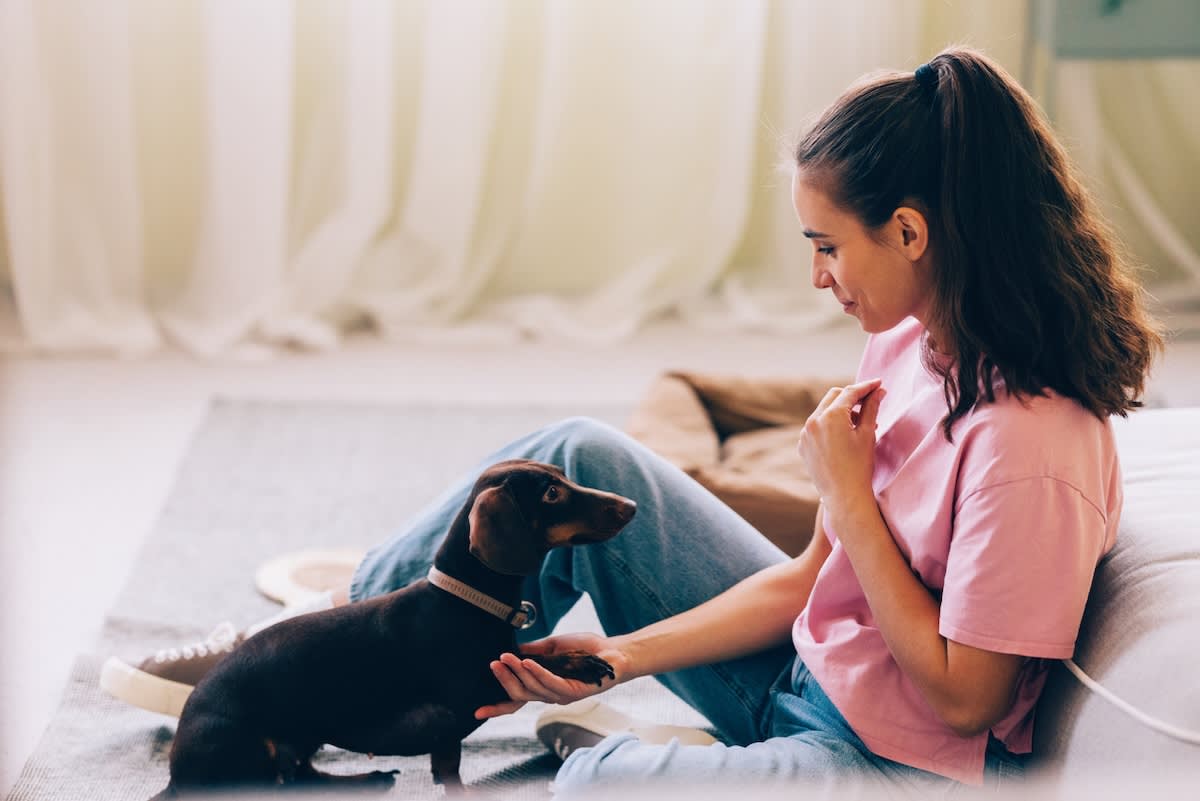
Share Article
I am a small animal vet entrusted with the care of a whole range of animals in the south of Scotland. Although I love my job, it does mean that I often sadly come across preventable ailments and injuries in animals caused by all sorts of things that pet parents didn’t necessarily realise weren’t suitable for their dog. Because of this, I now have a long list of things that I would never do with my own pets for their safety.
First up on my list is one for the Dachshund parents out there. I myself am not lucky enough to have one, but if I did, I would never teach them the sit-up and beg trick.
What is the ‘begging’ trick?
This trick is seen a lot on social media. Dogs sit down on their hindquarters, raise both front paws and balance upright on their backsides. This is sometimes a natural progression from a “sit” command as they reach up for their rightful treat, but it can take practice to develop the muscles to hold the position.
Why is it so problematic for Dachshunds?
For the average dog, learning this trick and performing it once in a while is no biggie. But for Dachshunds and other long-backed and short-legged dogs, this trick can put them at risk of worsening or triggering underlying back problems. The position puts a lot of stress on the spine, and if your pup is already at risk of intervertebral disk disease (IVDD), it can exacerbate the condition and even cause flare-ups of back pain.
Dachshunds are a chondrodysplastic breed, which means their legs are shorter and disproportionate to their bodies in size due to a mutation of a growth opens in new tab factoropens in new tab-associated gene that affects the way that their bones develop. Other breedsopens in new tab with similar risks include Bulldog breeds, Corgis, Basset Hounds, Pekingese, Shih Tzus, Beagles and Poodles.
Chondrodystrophy – caused by a different gene mutation – also manifests as the short-legged phenotype, as well as abnormal premature degeneration of intervertebral discs (IVDD) that leads dogs to be susceptible to intervertebral disc herniation. Dachshunds have a 10–12 times greater riskopens in new tab than other breeds of showing symptoms associated with IVDD, and as high as an estimated 24 percent can have symptoms at some point in their lifetime.
I have seen patients who have been unlucky enough to have back pain flare-ups or herniated disks from engaging in even minor activities such as running up and down stairs or jumping off a sofa. So, this begging trick, especially if done frequently, can be more than enough to trigger further back issues if already at risk.
Other things for Dachshunds to avoid because of IVDD
If your pup has been diagnosed with IVDD or is a breed known to be at risk for IVDD, such as the breeds above, you should be very careful to avoid unnecessary pressure and strain on the spine. This means any activity that can cause acute impact, such as jumping off high levels (or the sofa too many times!), or ongoing, continued stress on the spine, such as obesity. To limit this risk, invest in ramps or smaller steps for furniture and beds to make high-up areas safe for your pet.
Alternative tricks Dachshunds can learn
Prevention is always better than treatment, so if there’s anything you can do to reduce the risk of these (not only emotionally) costly treatments, the better! Make sure you work to keep your pup nice and trim so they‘re not carrying extra weight that will impact their spine, and instead of the sit up and beg trick, why not focus on other training commands* for them to learn, such as:
“Sit”: a classic.
“Down”: beginner’s choice.
“Show me your belly”: teaching them to roll onto their back for a tummy rub.
“Hide and treat”: get that nose working by hiding treats or some of their daily food around the room and asking them to search them out. You can work up to naming specific toys or people to find.
“Close the door”: keen beans should try this harder trick, and once mastered, you can enjoy the benefits from the sofa!
If you suspect your sausage dog has any niggling back pain and shows signs such as yelping when being picked up or reluctance to go up or down even small steps, let your vet know as soon as possible. This will allow any issues to be caught early, and the sooner treatment is started for back pain, the better, to stop it from escalating further.
Treatment for IVDD
In between each vertebra in the spine, there is a disk made of a cartilage ring with a gel-like interior. This disc helps the spine flex and bend, while also helping with support. Through degeneration of the cartilage or trauma from being squished between the vertebrae, the gel substance can bulge and rupture. This is known as a disc herniation. Depending on how severe the rupture is, symptoms can range from back pain, mild neurological symptoms and wobbliness through to paralysis.
For dogs with more than mild pain, further diagnostics after an initial visit to your vet will typically be recommended to investigate the level of damage. Unfortunately, severe rupture or compression against the spinal cord can have a very poor prognosis, as it can cause full paralysis, along with loss of bladder and bowel control. Surgery is often recommended as treatment to decompress the spinal cord – unless it is only a mild case without full rupture or the herniating bulge is not compromising the spinal cord. This is specialist surgery, and so you may need to be referred to a hospital or have a specialist surgeon visit for this treatment. Non-surgical rehabilitationopens in new tab may be the treatment of choice for mild cases or in cases where surgery is not possible. It goes without saying that surgery like this will be painful and traumatic for your dog (and you!) and won‘t come cheap.
Even with mild cases, treatment is complete cage rest with ongoing pain relief, and symptoms may take weeks or even months to resolve. Even ‘mild’ cases can put a lot of stress on you and your dog (as well as your bank balance).
*Stuck on where to start with training? Kinship has a completely free training programmeopens in new tab to teach new pet parents all the basics.
References
Dickinson, Peter J., and Danika L. Bannasch. “Current Understanding of the Genetics of Intervertebral Disc Degeneration.opens in new tab” Frontiers in Veterinary Science, vol. 7, Frontiers Media, July 2020.
“Intervertebral Disc Diseaseopens in new tab.” Cornell University College of Veterinary Medicine, 2025.
Packer, A., et al. “DachsLife 2015: An Investigation of Lifestyle Associations with the Risk of Intervertebral Disc Disease in Dachshunds.opens in new tab” Canine Genetics and Epidemiology, vol. 3, no. 1, BioMed Central, Nov. 2016.
Sedlacek, Jordan, et al. “Nonsurgical Rehabilitation in Dachshunds with T3-L3 Myelopathy: Prognosis and Rates of Recurrence.opens in new tab” Frontiers in Veterinary Science, vol. 9, Frontiers Media, July 2022.
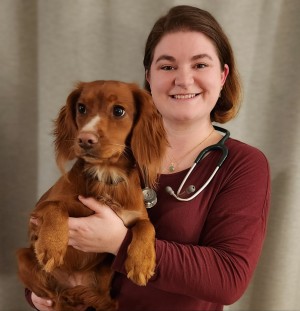
Dr Josephine Corrick, BVMSci, BSc, MRCVS
Dr Josephine Corrick, BVMSci, BSc, MRCVS is a veterinary surgeon based in the south of Scotland where she has been since graduating from the University of Surrey. She enjoys working in general practice treating small animals. Her particular interests include diagnostic imaging and the treatment of wildlife.
Having found a passion for veterinary medicine after doing a degree in Equine Sports Science she still enjoys including horses in her life by spending time with her highland ponies. Alongside her clinical work, she helps run a smallholding caring for rare breed sheep and exploring the Scottish countryside with her young Cocker Spaniel.
Related articles
![woman with red hair holds senior Pomeranian dog]()
Senior Dog Care
Is your dog getting older? As dogs age, it’s important to recognise both physical and mental changes they may be experiencing and learn how to cater to those needs
![Older dog playing with ball in a green field]()
Dog Arthritis Treatment: How to Relieve Arthritis Pain in Dogs
Tips for treating achy joints – from medications to massages
![]()
What to Do If Your Dog Has a Slipped Disc
A veterinary neurologist explains all
Can You Give a Dog Paracetamol?
Don’t reach for the medicine cabinet just yet
What Can I Give My Dog for Pain Relief? Safe & Effective Options
Safe pain relief tips for dogs, plus when to call the vet for help

